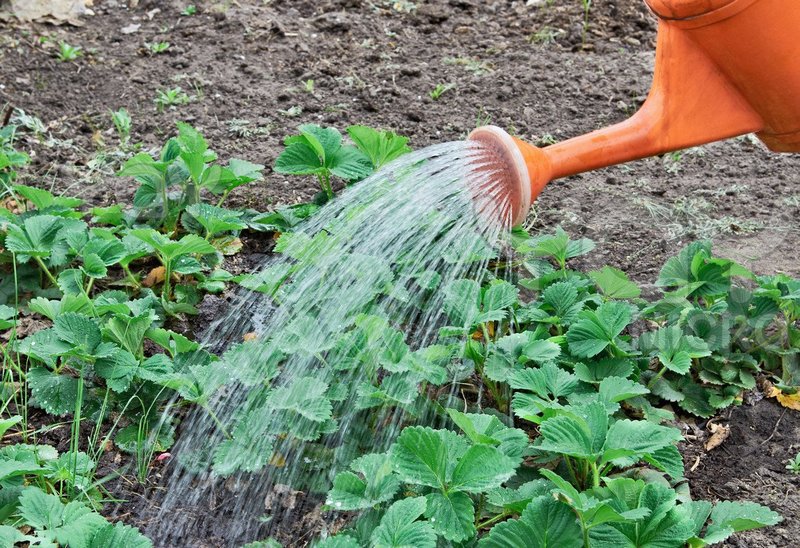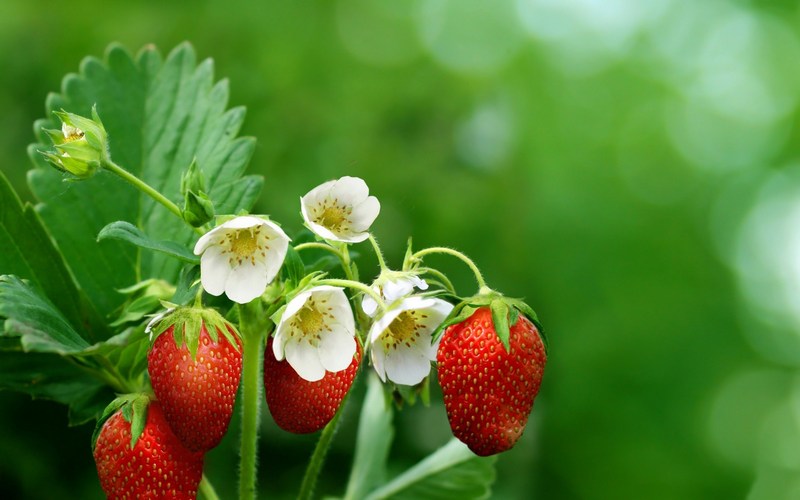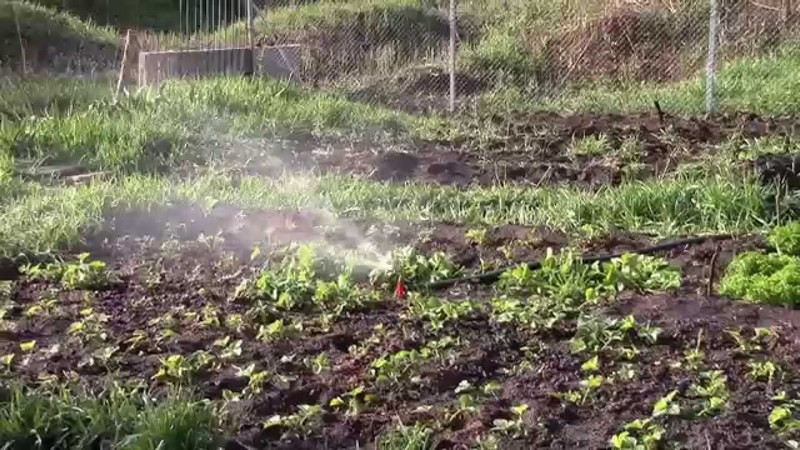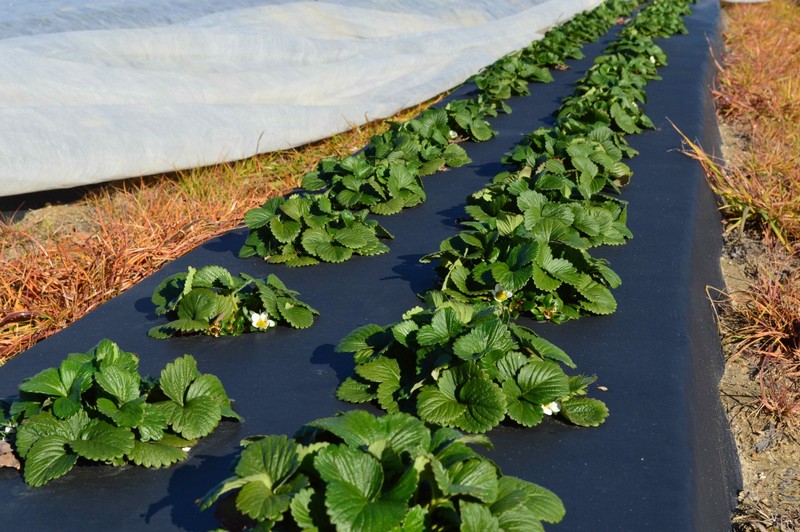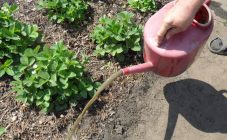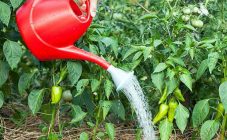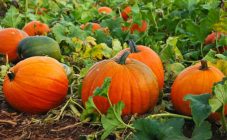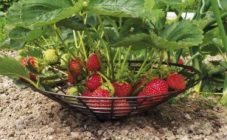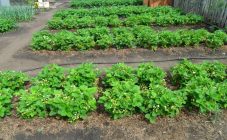Content:
Strawberries, a favorite berry of summer residents, are particularly demanding when growing. It is often called capricious, but there is only one reason - not everyone knows how to water strawberries so that they give a high harvest on time.
Biological features of strawberries
Strawberry, wild strawberry, victoria - the usual name of the berry is not always correct. There are significant botanical differences between strawberries and strawberries, Victoria is a very old common variety of garden strawberries. Without going into biological subtleties, the berry grown in summer cottages is exactly garden strawberry, its large-fruited variety.
A low, up to 45-50 cm plant has long petioles on which triple leaves of an oval or ovoid shape are located. Their color is green, of various shades, determined by the variety. The inflorescence is corymbose, consists of several flowers with petals of white, less often pale pink, even less often - a delicate creamy yellow color.
The root system is well developed, but a significant part of it is located only in the near-surface layer of the soil, usually not penetrating deeper than 20-25 cm. Only single roots reach great depths. It is in this feature of the roots that the secret of successful plant growth lies. The roots simply cannot penetrate into the aquifers of the soil, although the plant itself adores moisture. That is why proper watering of strawberries is its main "whim".
Strawberry watering technology
Watering a berry garden is not as easy as it might seem at first glance. The large mass of leaves located close to ground level, the delicate structure of the berries impose certain restrictions.
How and when to water
First of all, the general rules are observed:
- The plantings are irrigated only in the morning, by the evening the soil under the bushes should be dry so as not to provoke fungal diseases.
- In case of prolonged bad weather, the beds are covered with agrotechnical cloth to limit the amount of water falling on the soil.
- To reduce the evaporation of moisture, a mulching material is used - hay or straw.
It is very important to know what kind of water to water - it should be soft, warm, with a temperature of about 18 ° C;
The regularity of watering is influenced by:
- The mechanical composition of the soil. On sandy loams, watering is needed more frequent.
- The location of the beds. Generously sunlit plantings need more frequent hydration than shaded ones.
- Plant vegetation stage, mode and method of water supply.
- The age of the bushes. Young seedlings, just planted in the ground, require daily watering with a moderate amount of water. Strawberries in the first year of life need more moisture than older plants.
- Growing method. Greenhouse, ground, on black film, under agrotechnical - all options have their own characteristics.
- Weather. Each rain counts as watering, but this does not mean that three irrigations are missed after 3 days of rainfall.
The regularity of moisture supply also depends on the season. General principles:
- in spring, when the sun is still beating down with might and main, watering is carried out weekly;
- in summer, especially in the middle of it, when the heat heats up the ground very much, irrigation is required every 2-3 days;
- in the fall, they return to the supply of moisture every 6-7 days.
Features of watering by stages of vegetation
Regardless of the timing of planting seedlings in the beds, it is watered the same way: every day, 0.5 liters of water is poured onto each bush strictly under the root. Since this usually occurs in spring or autumn, when there is no heat, experienced summer residents recommend dividing the daily dose into 2-3 doses so that water evenly flows to the roots.
After 2 weeks, the seedlings are transferred to another mode - weekly, at the rate of 12 l / m2. Watering can be done by sprinkling using watering cans or portable sprinklers.
Watering at the beginning of the growing season
The first irrigation after winter is carried out on completely thawed bushes. Watering time is determined for each region individually, usually the last decade of April - early May, in the south - earlier. The water is preliminarily kept at room temperature so that the roots do not suffer from stress.
The best way to supply water in the spring is by sprinkling to wash away the dust and dirt accumulated over the winter. Clean, fresh leaves not only look charming in the garden beds, but also provide a better supply of nutrients from the air.
If the strawberry beds are covered with black film or agro-fabric and are equipped with a drip irrigation system, before the first water supply, the condition of the soil must be checked - the moisture remains under the cover for a long time, the first irrigation can be postponed.
Bloom
There is no consensus among gardeners on how often it is worth watering strawberries during flowering and ripening. Many believe that during this period natural precipitation will be quite enough for berries - rains, morning dew. However, the lack of water affects the quality of the forming fruits: they will be small, sour. Recommended watering schedule:
- twice a week if the weather is warm but not hot;
- every other day during the heat.
Water consumption rate 18-20 l / sq.m. Watering is carried out in a ditch method - in shallow grooves between the bushes, where the stream is directed. You can use the watering can by removing the nozzle. In this case, make sure that drops do not fall on the leaves, especially on the flowers.
Fruiting
This growing season is characterized by significant moisture consumption, as the plant performs two important works at once: ripening of berries and preparation for laying the buds for the next season.
Watering method:
- Ripe berries are harvested to prevent spoilage. At the same time, the development of the remaining buds is accelerated.
- Watering is carried out every 8-10 days.
- Water consumption 30 l / sq.m.
- They irrigate only the soil, letting water flow along the grooves between the bushes. If a layer of mulch is laid, it is allowed to pour water in the immediate vicinity of the bushes.
After harvest
Often, gardeners, having collected the last berries and cutting off the leaves, let things go by themselves. But strawberries during this period need moisture no less than any other: the bushes tired of fruiting lay new buds - a guarantee of the future harvest.
Irrigation is carried out every 7-10 days, checking the irrigation schedule with the weather. For each square meter of planting, 12-15 liters of water are poured. The best watering method for this period is by sprinkling. The use of peat as a mulch layer retains moisture and improves the structure of the earth.The adopted regimen is maintained as long as there are warm, dry days. In rainy or cold weather, watering is not carried out.
Drip irrigation under the film
Drip irrigation is a modern method of irrigating greenhouse and open beds, ideal for strawberries in the flowering and fruiting stages. It significantly saves the summer resident's time and water consumption - a topic that is relevant for areas where there is no well or water supply. Its use facilitates irrigation of strawberries grown in plastic-covered beds. The system can be mounted both under the film and above it.
Advantages of the method:
- the use of the equipment is not difficult; it can be purchased in a retail network or made by hand;
- water goes directly to the roots of strawberries, which not only saves it, but also reduces the chances of life for weeds;
- dry surface of the earth does not favor the development of pathogenic microflora;
- the number of necessary loosening of the soil is reduced.
With drip irrigation, there is no need to measure the required amount of water, only time control is needed. The tap must be opened:
- for 25 min. for watering flowering strawberries and after harvest;
- for 45 minutes - during the ripening of the berries.
The irrigation schedule does not change.
A budget option for drip irrigation is plastic bottles that are buried in the soil next to bushes or hung over plants.
The simplest way is to pierce a hole in the cork with a red-hot needle, pour in water, drop it with the neck down. The soil is in direct contact with water, clogging up the tiny hole after it gets wet. After drying, the puncture opens, moisture begins to flow to the roots.
Plastic containers are good for those who visit the dacha only on weekends, water on a full machine will give strawberries in time.
For strawberries growing under agrofibre, all irrigation methods are appropriate: it allows water and air to pass through.
Frequent beginner mistakes
- Watering with cold water. The root system is under stress, which often ends in decay.
- Sprinkling during flowering and ripening of berries. Experienced gardeners recommend covering strawberry beds with film or agrofibre when bad weather approaches. Water falling on the open flowers washes off the pollen, which leads to loss of yield. For ripening berries, this is fraught with a deterioration in taste, wateriness of the fruit at best, the development of putrefactive processes on berries, leaves, stems (more frequent option).
- After harvesting, the strawberry plantings stop watering. In the absence of moisture, the laying of fruit and generative buds slows down, they do not have time to fully form before winter. The prospects for the next harvest are poor.
- Abundant watering. Strawberries love moisture, but strongly protest against waterlogging. It can survive short-term flooding, but stagnant water causes root rot.
- The mechanical properties of the soil are not taken into account. Strawberries growing on light soils containing sand require irrigation more often than on clayey ones.
Tips & Tricks
The first watering of the season can be combined with feeding strawberries with yeast. They contain macronutrients and micronutrients. Fertilizer from dry powder is prepared as follows: 1 sachet of dry product is dissolved in 300 ml of warm water with the addition of 2 tbsp. Sahara; after 4 hours, the concentrated liquid is diluted with 10 liters of water; before watering, the mixture is diluted a second time - 5 liters of water are taken for half a liter of yeast infusion. 500 ml of fertilizer is poured under each bush.
Excessive water supply during active growth gives fragile leaves and peduncles, which easily fall ill with morning drops in temperature, typical of spring.
It is useful to add to the sprinkler water before flowering:
- Iodine, 30 drops / 10 liters of water. Provides protection against rot, beetle larvae, wireworm.
- Potassium permanganate disinfects the aboveground parts of strawberries and the soil.
- Boric acid promotes the growth of full-fledged ovaries.
When the berries grown under agrofibre begin to turn pink, the water supply is reduced for 10-15 days or stopped altogether. The moisture stored in the protected land is quite enough for the berries to ripen and become sweet.
Planting green manure plants instead of mulch in the aisles helps to retain moisture, improve the soil, and hinder the growth of weeds.
Caring for the most delicious and healthy berry requires strict adherence to all rules and recommendations. The most important thing is that the quality of irrigation, compliance with its terms and norms completely depends on how good the berry will be, how the plants will overwinter, what will be the harvest of the next year.
